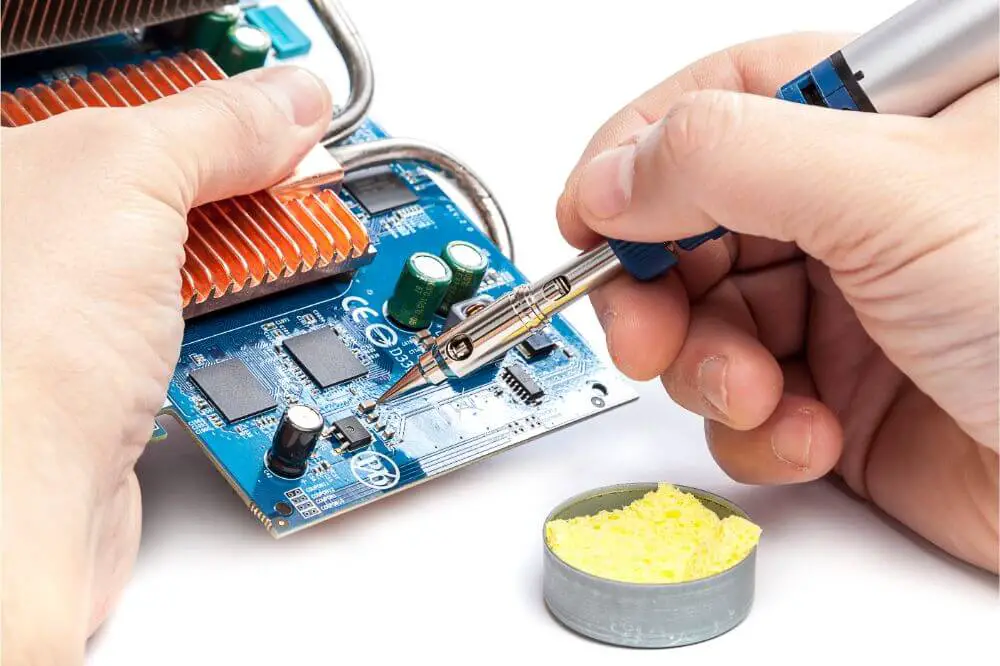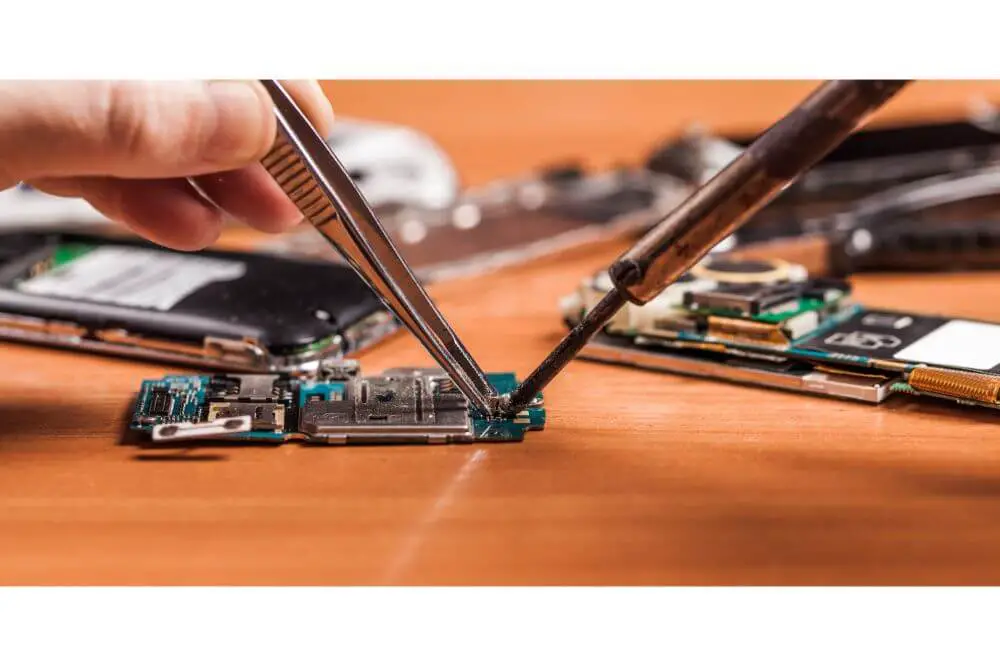With the soldering iron, you get to do solder tasks effectively. However, what should you do when your soldering iron breaks down? This is undoubtedly very frustrating, especially if you have no idea where to start with these repairs.
If you’re in such a scenario, today’s your lucky day: In this article is a detailed guide on the steps you need to follow when fixing a broken soldering iron. By following these steps as described below, your soldering iron, we’ll be back to working condition in no time. Consequently, you get to continue carrying out the soldering tasks without any hassle.
Steps To Fixing A Broken Soldering Iron
Whereas fixing the soldering iron might sound somewhat complicated, this isn’t the case. This is especially the case when you decide to follow the step-by-step guide on how to fix your broken soldering iron. Here are the steps you should follow through this entire process.
Step 1: Prepare Your Workstation
The first thing you should do before you even start fixing your destroyed soldering iron is getting all the items to the working table. After doing this, confirm that any conductive materials or wires are far away from the working area. Doing this is important if you want to prevent an accident while fixing the broken soldering iron.
In addition to this, you need to put in place extra precautions by making sure to unplug the soldering iron from the power source.
Step 2: Inspect The Broken Part
Once your workstation is fully prepared, you should now start to inspect the broken soldering iron. You should do this by getting a screw to take out the screwdriver and detach the set screw located on the heating element’s upper part. After doing this, confirm that the destroyed portion is above the soldering tip’s neckline. You’ll need to buy a new soldering tip if the destroyed part is found on the neckline.
Step 3: Rework The Solder Tip
Now that you know what needs to be repaired, wear your gloves to start reworking the solder tip. You should do this by taking hold of the soldering tip and shaping back the destroyed section to form a pointy shape. Having this design will reduce the copper’s exposure outside the tip surface of the soldering iron.
Subsequently, angle the tip and get it back into line along the pointy part to restore its original form. If the surface is exposed so much, it has a greater likelihood of needlessly revealing the solder tip’s copper core that gets quickly eaten by the lead when carrying out soldering activities. You should follow this up by reassembling your soldering iron by joining the soldering tip to the heat assembly with screws after achieving the wished shape.
Step 4: Recondition The Soldering Tip
You should recondition the soldering tip by connecting your soldering iron to a power outlet and giving it enough time to heat up. Once the soldering iron gets heated under ordinary soldering condition, dip the soldering tip into the now open Plato Tip Tin TT-95. Consequently, start treating the revealing surfaces on the tip tinner by rotating the soldering iron’s tip.
Doing this will lead to the reconditioning of the soldering tip. You also get offered a coating that guarantees the interior copper core remains detached after the application of soldering leads during normal usage.
Step 5: Look After Your Soldering Iron
After restoring the tip of your soldering iron to great condition, you need to make sure not to force its tip onto the materials being soldered. This isn’t recommended because heat doesn’t rise when the tip gets forced, and instead, this only causes it to break. You shouldn’t use excessive abrasive when removing solder from the tip or iron such as solder wicks, dry sponge, as well as others because this thins up the tip of the soldering iron.
Moreover, it’s recommended to use enough solder quantity because using a small amount leads to the deterioration of the soldering tip’s tinned surface. Another effective method of caring for the tip of your soldering iron is by reconditioning it with the Plato Tip Tip TT-95 that’s a mixture of cleaner and tinner. Using it guarantees the solder tip is properly maintained after every use, helping extend its lifespan. It’s also advisable to use a wet sponge when cleaning the soldering iron tip to avoid excessive friction.

Tips To Maintain Your Soldering Iron
After fixing your soldering iron, it’s vital to implement ways of ensuring its lifespan is prolonged. The only way you can achieve this is by making sure the soldering iron is well-maintained frequently. With regular cleaning and preventative maintenance, your soldering iron will remain useful for many years to come.
Some of the important maintenance tips to observe for your soldering iron include:
- It’s best to stop using materials such as sandpaper when cleaning your soldering iron.
- Ensure the solder being used is always of exceptional quality. It would be best if you avoided poor quality solder as it contains lots of impurities that accumulate on the soldering iron’s tip over time. This continued accumulation makes it a lot harder for the transfer of heat when soldering joints.
- Make sure the tip of the soldering iron is at all times clean, and you should do this using a wet sponge. Nonetheless, this shouldn’t be done frequently, as it might lead to the tip’s destruction. This usually happens because wiping the tip often leads to the drastic increase and decrease of temperatures that causes the expansion and contraction of this tool’s metals.
- Confirm the tip of your soldering iron is fastened properly should you opt to replace it.
- It’s recommended not to expose the soldering iron’s tip to flux, which might be corrosive and leads to the tip getting destroyed over time.
Conclusion
Having a broken soldering iron is very inconvenient as well as frustrating. If this is a problem you’re experiencing at the moment, reading through this article has offered you the needed guidance on how to repair this essential tool. With this in mind, you never have to deal with the problem of not being to perform your soldering tasks due to a defective soldering iron.

